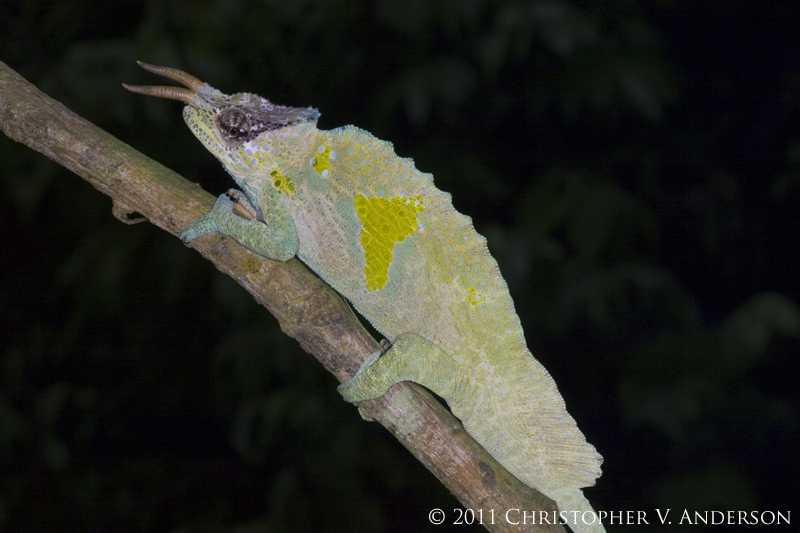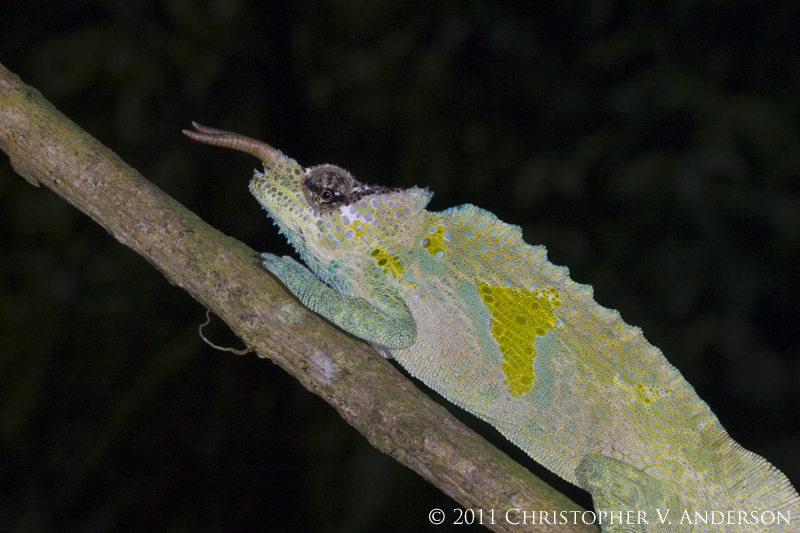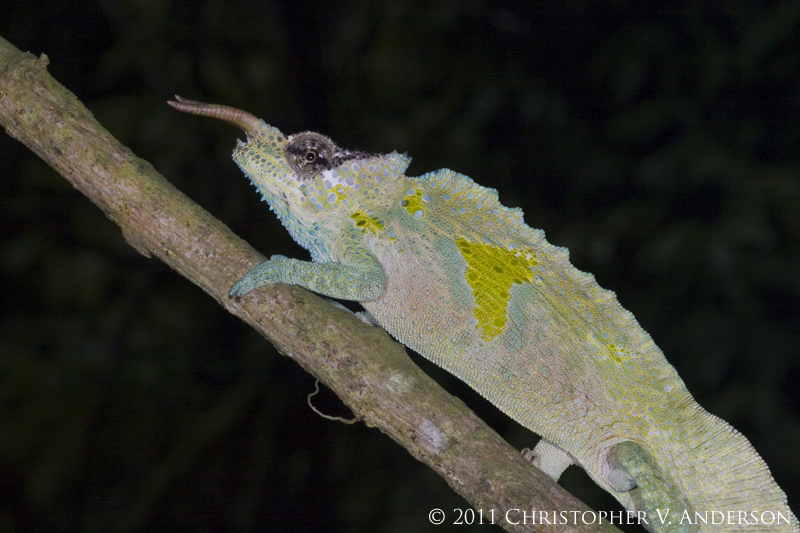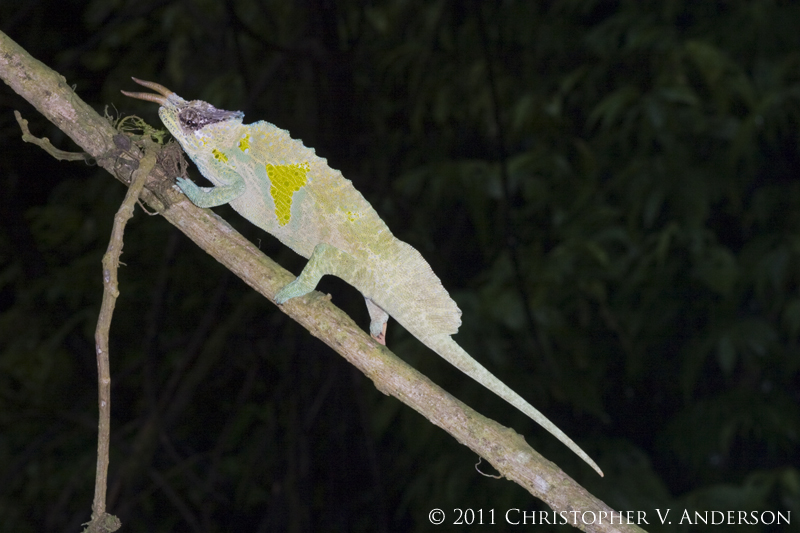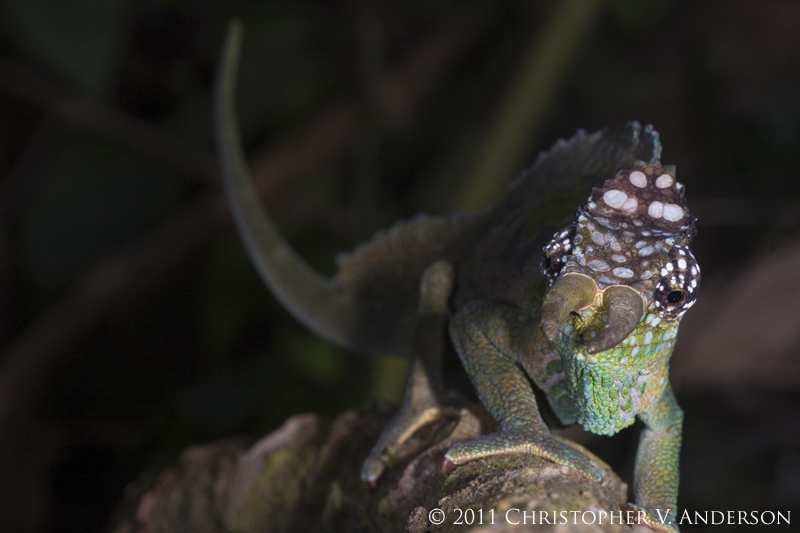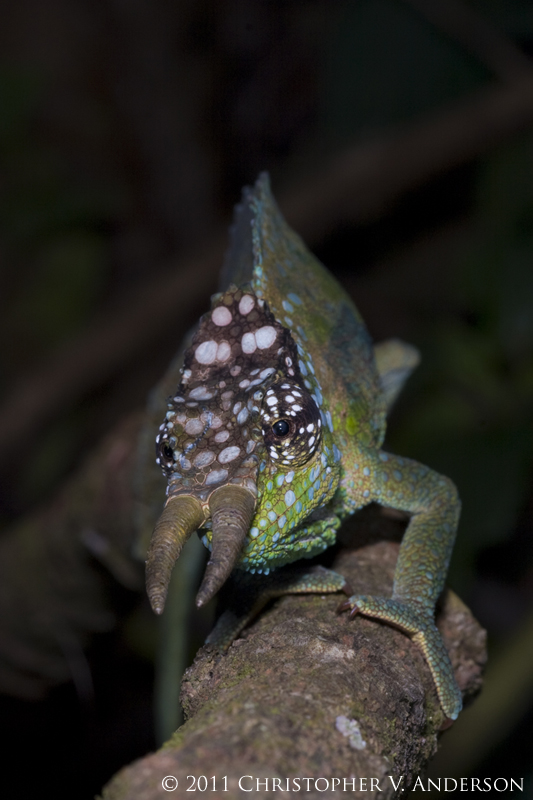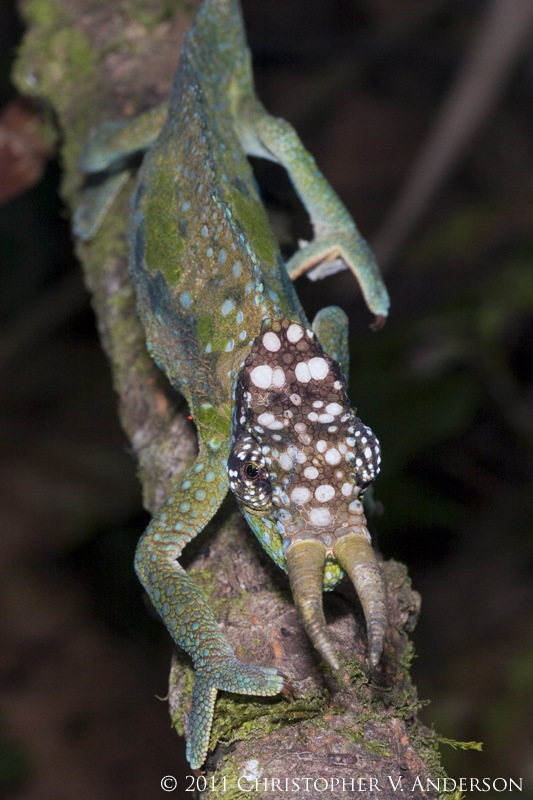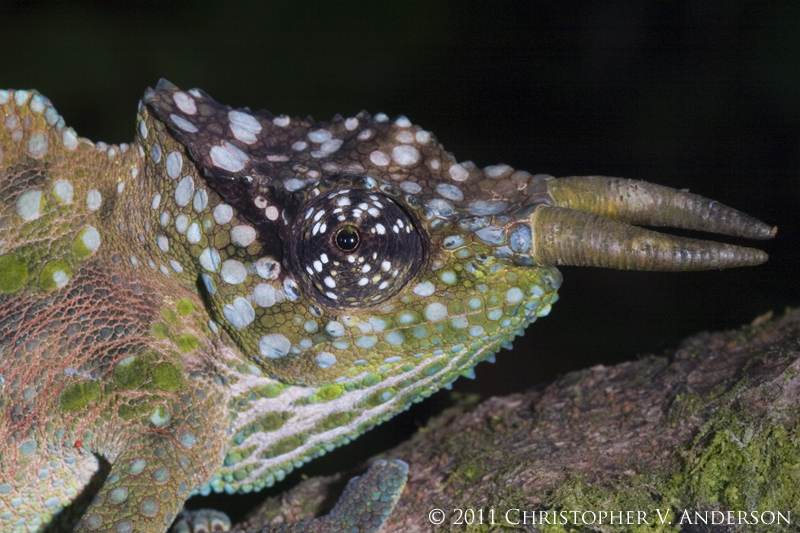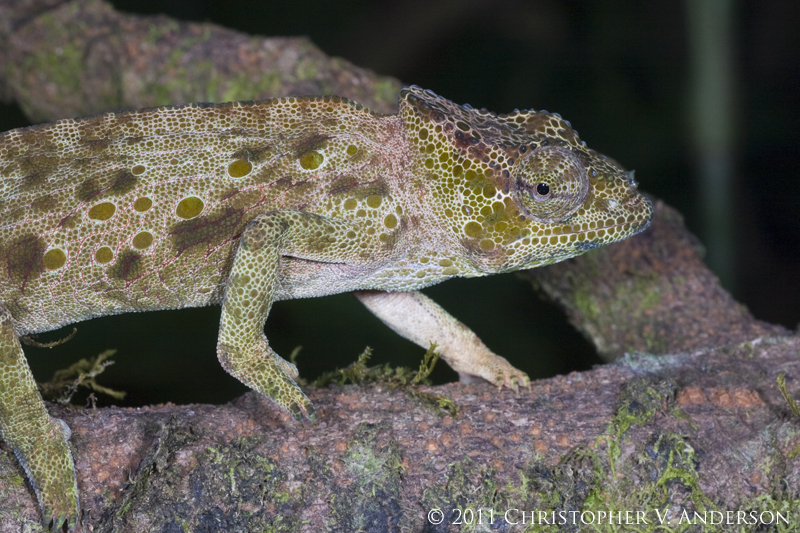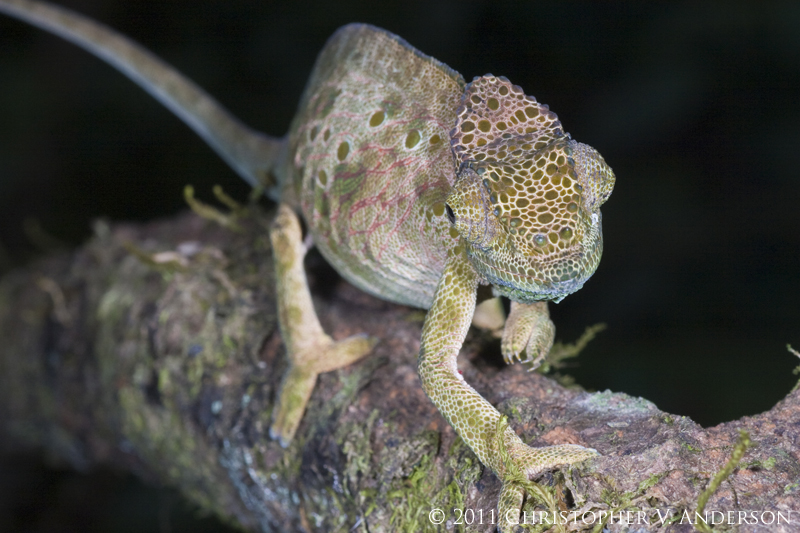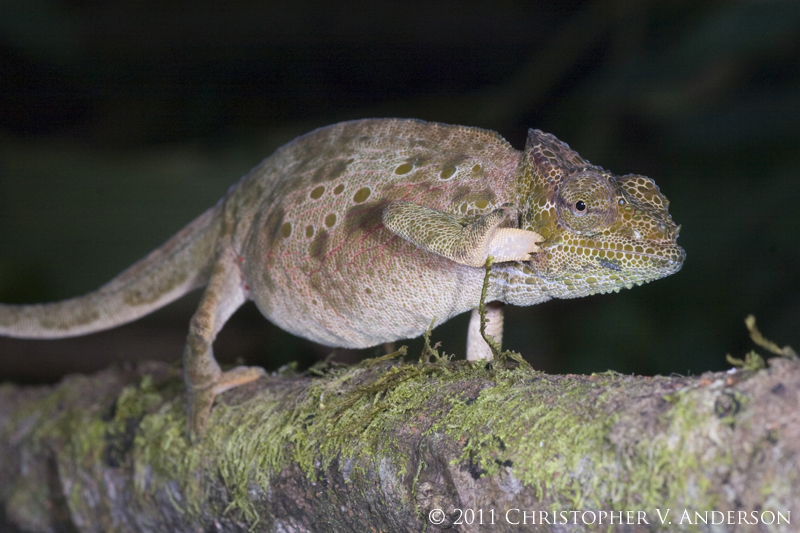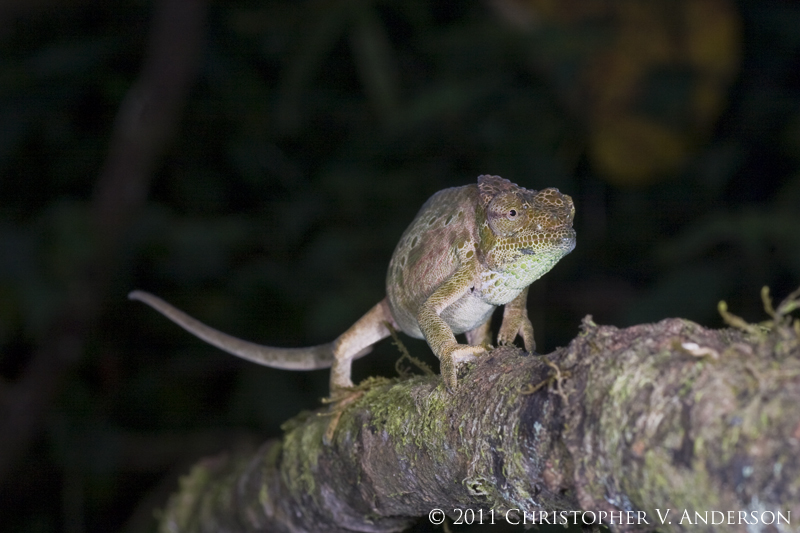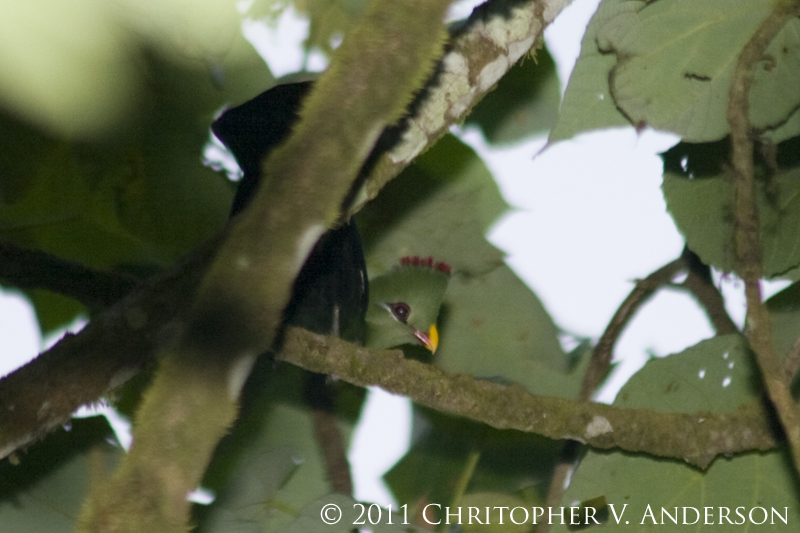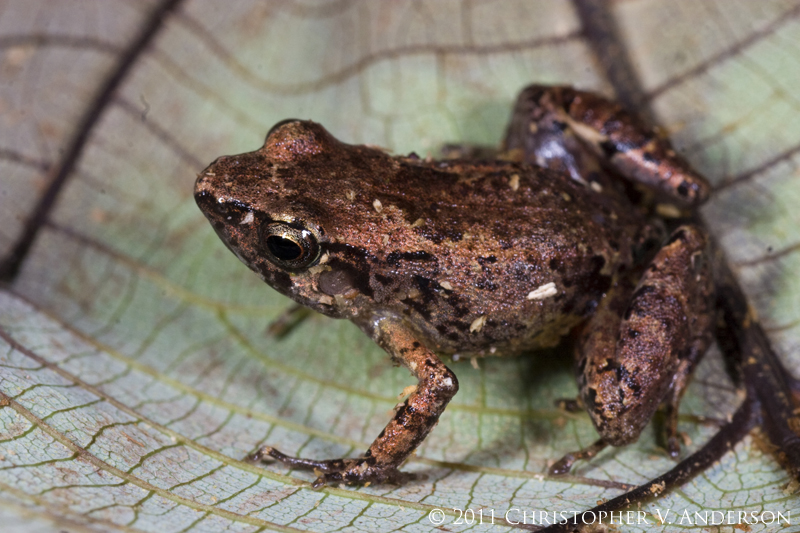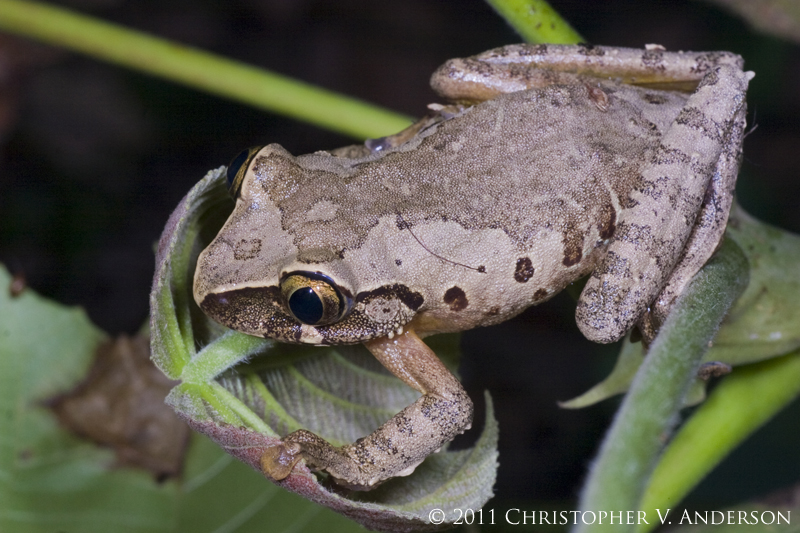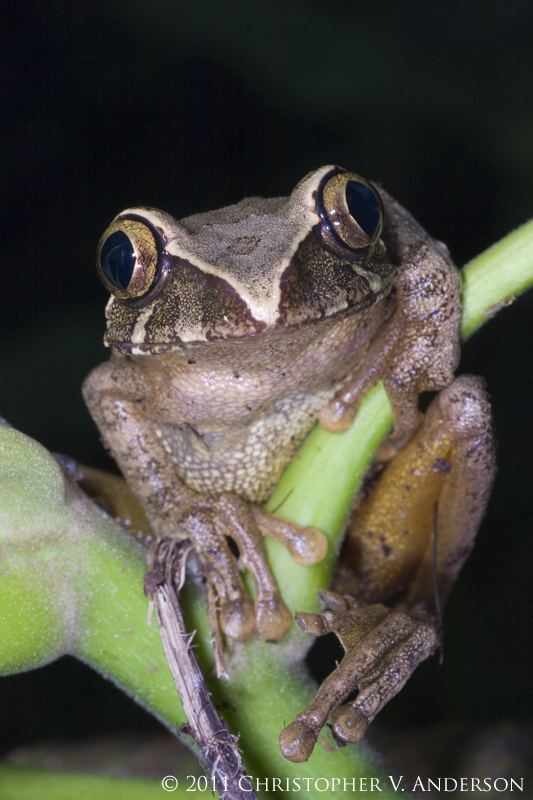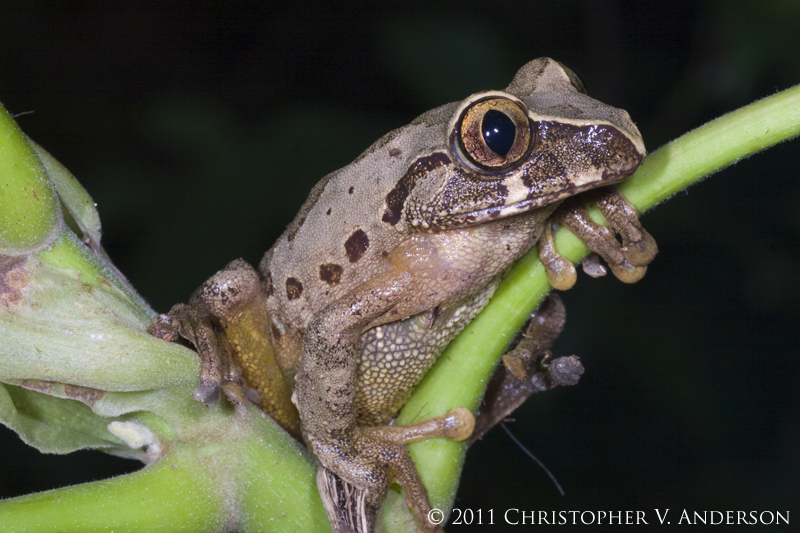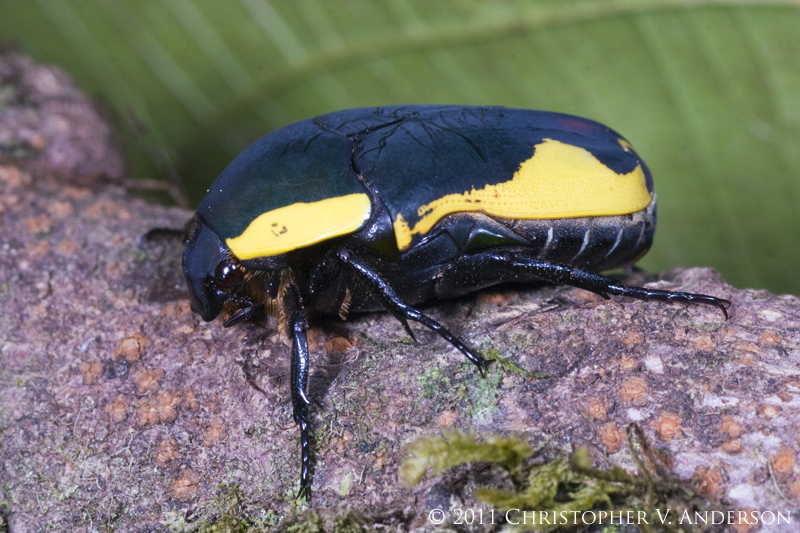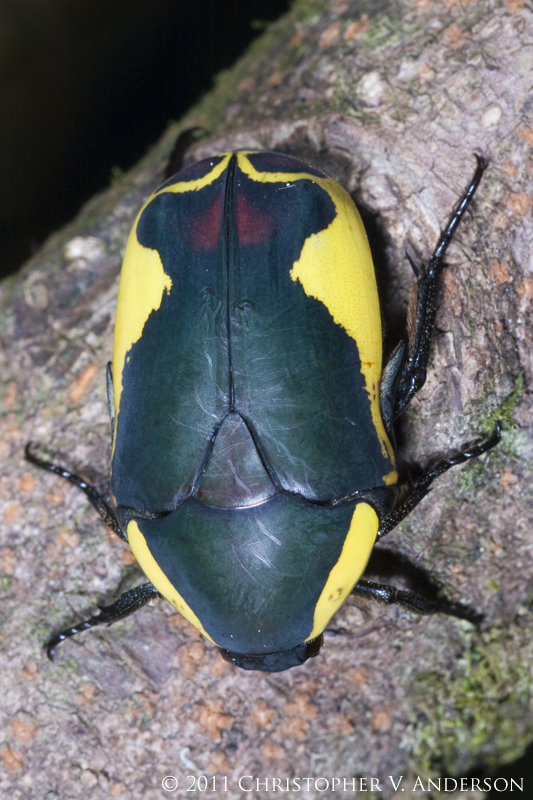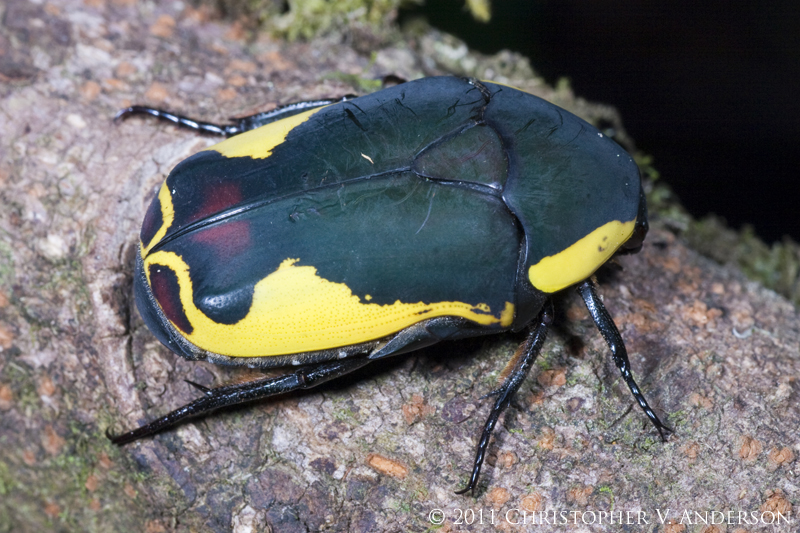Chris Anderson
Dr. House of Chameleons
I thought it was about time that I post the first of a series of threads with some of my photos from the Exo Terra Expedition to Cameroon I just got back from.
After arriving in the capital of Cameroon, Douala, last month, the first location we traveled to was Buea in the Southwest Region to visit Mount Cameroon. Mount Cameroon is interesting because it is the tallest mountain in west Africa but surprisingly is one of the only mountains in this volcanic mountain chain along the Cameroon-Nigeria boarder region that lacks a montane chameleon species. Instead, it has only a submontane species, Trioceros montium (Cameroon Mountain Two-horned Chameleon), which is only known to range up to 1500m in elevation.
During much of the day the mountain is enveloped in a cloud and seeing the forest from the town is impossible for a notable portion of the day. Despite the thick cloud (and high humidity), it was quite evident that it was the end of the dry season as the soil and leaf litter was relatively dry. Despite this fact, the vegetation was lush.
Submontane rainforest on Mount Cameroon (1100m):

The forest begins around 900m in elevation but unfortunately much of the forest up to ~1100m on the mountain is riddled with small agricultural plots where villagers are growing banana and cocoyam. At this point the mountain becomes steeper and agricultural plots likely become too difficult to maintain. This elevation did not, however, serve as a boundary to the logging of mahogany, ebony and other tropical hardwoods found on the mountain. During our hike to higher elevations, we came across a number of fallen trees that had been cut into planks and taken down the mountain.
Fortunately Trioceros montium appears well adapted to disturbed habitat and fairly abundant in it. We were able to locate 17 animals our first afternoon (1 during three hours of daylight and 16 within an hour after dark). The second day we stopped looking for additional specimens after finding another 5 that morning and realizing we had plenty to photograph.
A few things to mention about the habitat conditions on Mount Cameroon are the temperatures and humidity. Temperatures in Buea ranged from 25-30ºC (77-86ºF) but as soon as you got into the forest, the temps dropped considerably. During our visit, the temps ranged from 19-21ºC (66-70ºF) and I think this is a good example of why just looking at the weather of a close by location is not always indicative of the conditions actually found in the habitat. As I mentioned, during the day the soil, leaf litter, branches, etc., of the forest was quite dry but the humidity was extremely high and during a significant chunk of the day, the forest was sitting in a cloud. As you can see from the animals we found, the overall dry conditions did not effect their hydration or health, likely because of the high humidity, cool temps and morning dew.
For me the humidity appears to be a major deviation in the typical captive husbandry we offer this species. In captivity we sacrifice ambient humidity and try to substitute it with misting and the wetness that is associated with it. We know to allow the cage to dry out between mistings but particularly with screened enclosures where misting is needed multiple times a day, this is not necessarily a good representation of the wild environment. Based on what I saw, I'm inclined to start experimenting with ultrasonic humidifiers in my glass terrariums and lower my misting frequency, at least during parts of the year. I've heard of great results with T. melleri in captivity in Europe where their terraria were misted seldomly but kept in a fog for portions of the day, replicating a standing cloud.
Anyway, here are a few photos of a couple of the animals we found on Mount Cameroon.
Trioceros montium (Cameroon Mountain Two-horned Chameleon):













After arriving in the capital of Cameroon, Douala, last month, the first location we traveled to was Buea in the Southwest Region to visit Mount Cameroon. Mount Cameroon is interesting because it is the tallest mountain in west Africa but surprisingly is one of the only mountains in this volcanic mountain chain along the Cameroon-Nigeria boarder region that lacks a montane chameleon species. Instead, it has only a submontane species, Trioceros montium (Cameroon Mountain Two-horned Chameleon), which is only known to range up to 1500m in elevation.
During much of the day the mountain is enveloped in a cloud and seeing the forest from the town is impossible for a notable portion of the day. Despite the thick cloud (and high humidity), it was quite evident that it was the end of the dry season as the soil and leaf litter was relatively dry. Despite this fact, the vegetation was lush.
Submontane rainforest on Mount Cameroon (1100m):
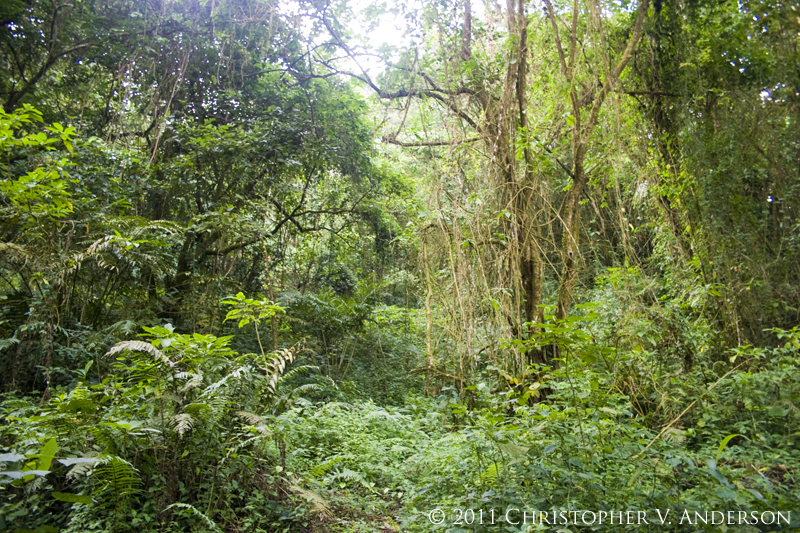
The forest begins around 900m in elevation but unfortunately much of the forest up to ~1100m on the mountain is riddled with small agricultural plots where villagers are growing banana and cocoyam. At this point the mountain becomes steeper and agricultural plots likely become too difficult to maintain. This elevation did not, however, serve as a boundary to the logging of mahogany, ebony and other tropical hardwoods found on the mountain. During our hike to higher elevations, we came across a number of fallen trees that had been cut into planks and taken down the mountain.
Fortunately Trioceros montium appears well adapted to disturbed habitat and fairly abundant in it. We were able to locate 17 animals our first afternoon (1 during three hours of daylight and 16 within an hour after dark). The second day we stopped looking for additional specimens after finding another 5 that morning and realizing we had plenty to photograph.
A few things to mention about the habitat conditions on Mount Cameroon are the temperatures and humidity. Temperatures in Buea ranged from 25-30ºC (77-86ºF) but as soon as you got into the forest, the temps dropped considerably. During our visit, the temps ranged from 19-21ºC (66-70ºF) and I think this is a good example of why just looking at the weather of a close by location is not always indicative of the conditions actually found in the habitat. As I mentioned, during the day the soil, leaf litter, branches, etc., of the forest was quite dry but the humidity was extremely high and during a significant chunk of the day, the forest was sitting in a cloud. As you can see from the animals we found, the overall dry conditions did not effect their hydration or health, likely because of the high humidity, cool temps and morning dew.
For me the humidity appears to be a major deviation in the typical captive husbandry we offer this species. In captivity we sacrifice ambient humidity and try to substitute it with misting and the wetness that is associated with it. We know to allow the cage to dry out between mistings but particularly with screened enclosures where misting is needed multiple times a day, this is not necessarily a good representation of the wild environment. Based on what I saw, I'm inclined to start experimenting with ultrasonic humidifiers in my glass terrariums and lower my misting frequency, at least during parts of the year. I've heard of great results with T. melleri in captivity in Europe where their terraria were misted seldomly but kept in a fog for portions of the day, replicating a standing cloud.
Anyway, here are a few photos of a couple of the animals we found on Mount Cameroon.
Trioceros montium (Cameroon Mountain Two-horned Chameleon):
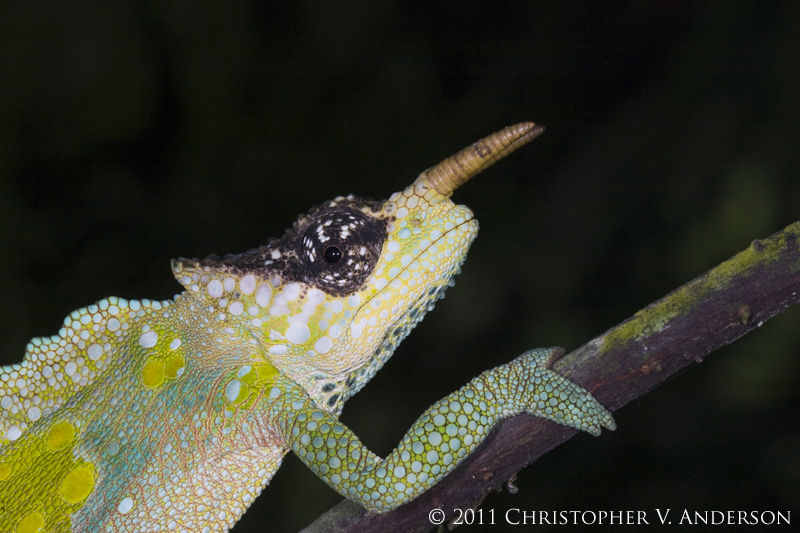
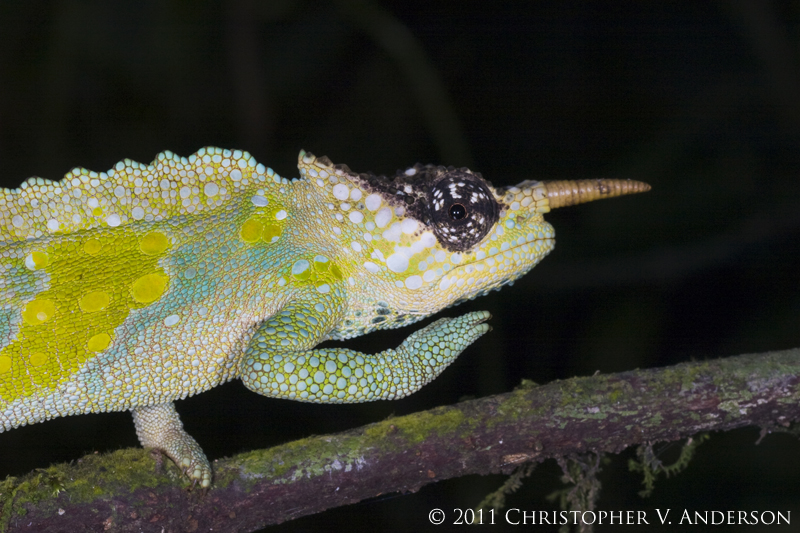
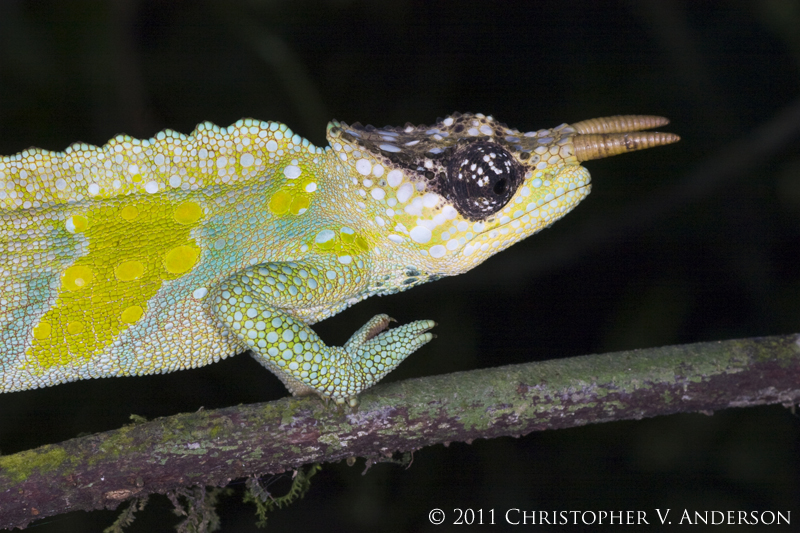
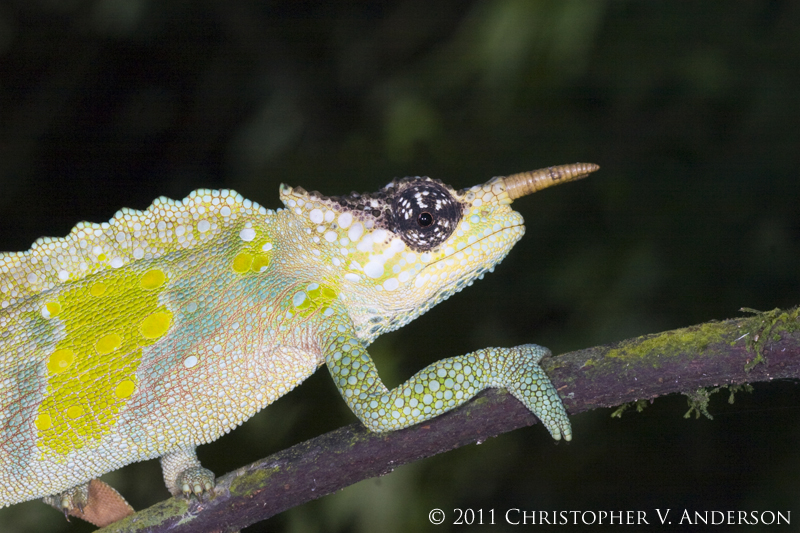
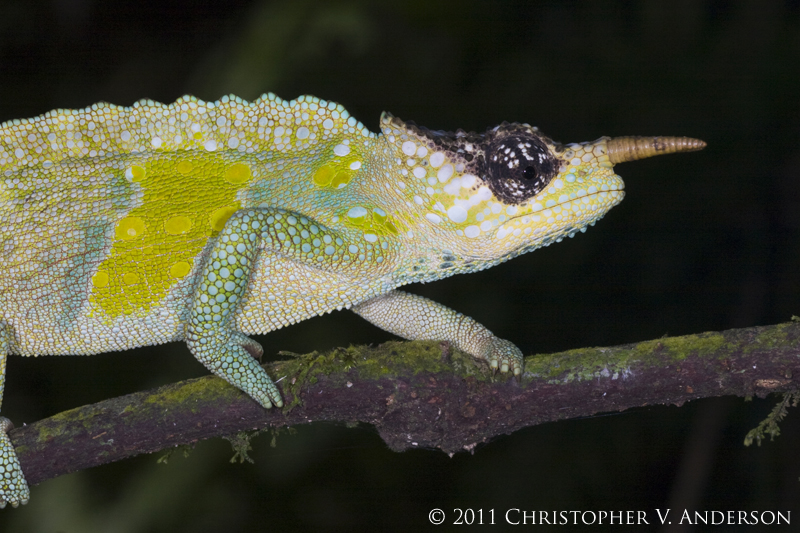
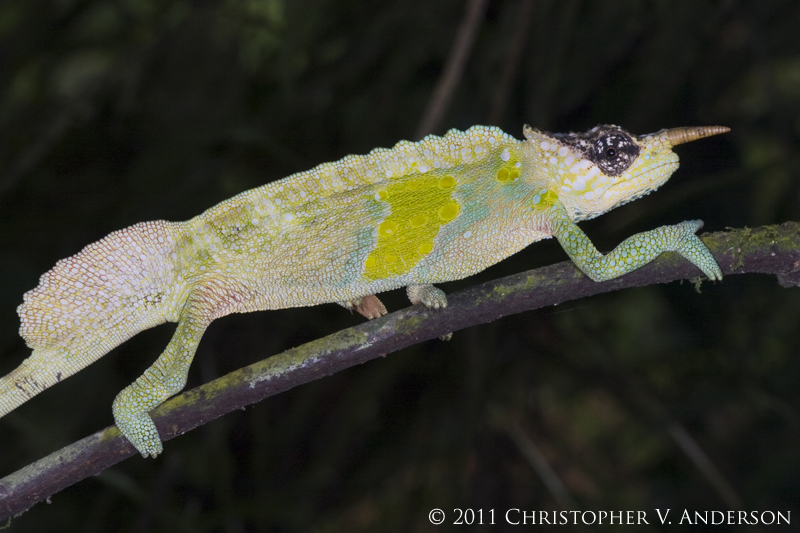
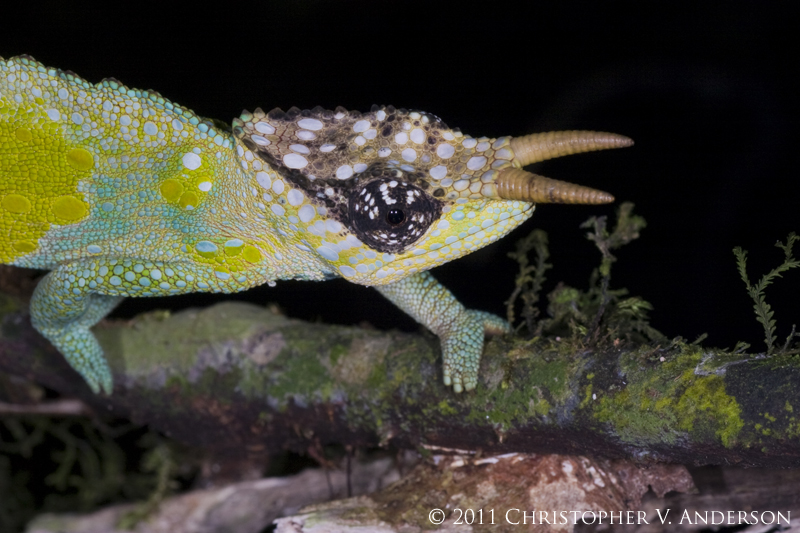
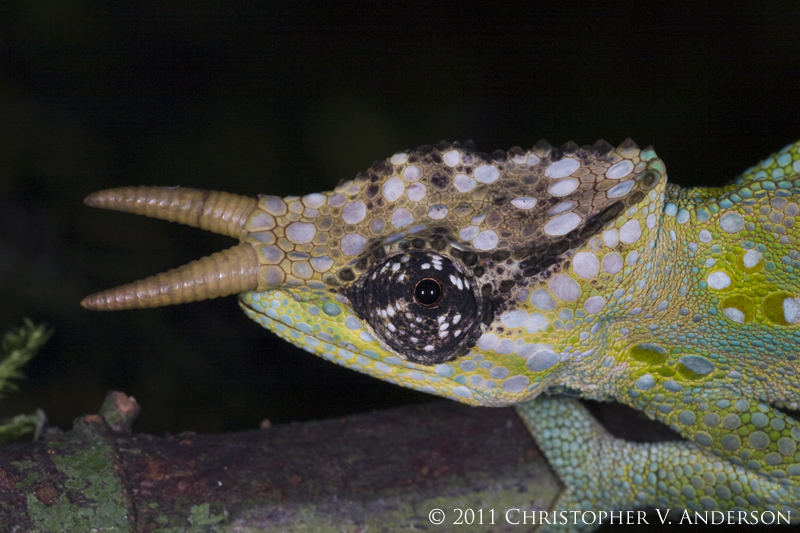
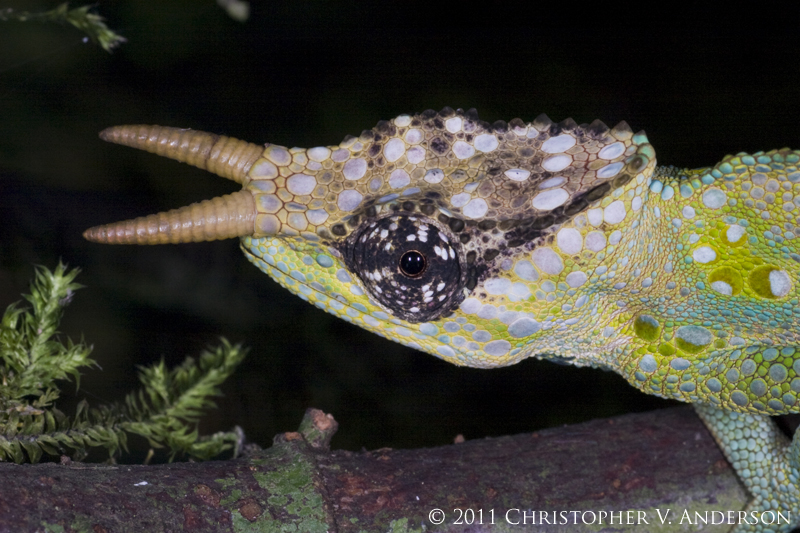
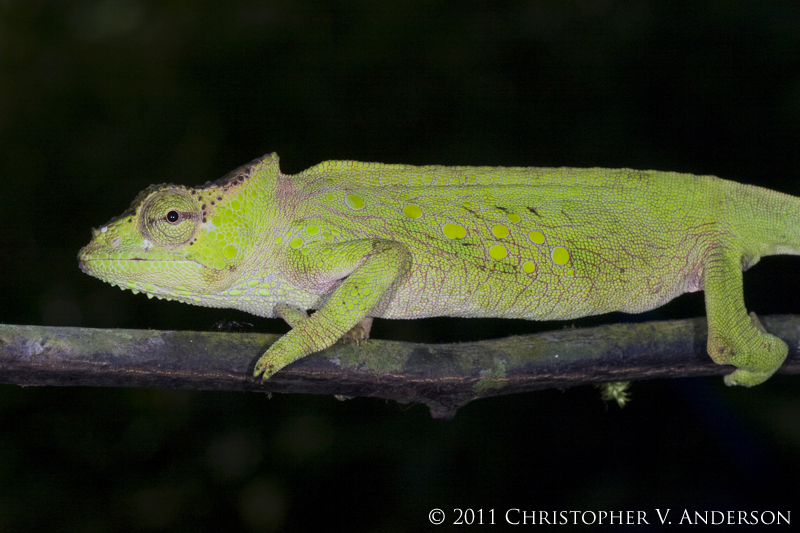
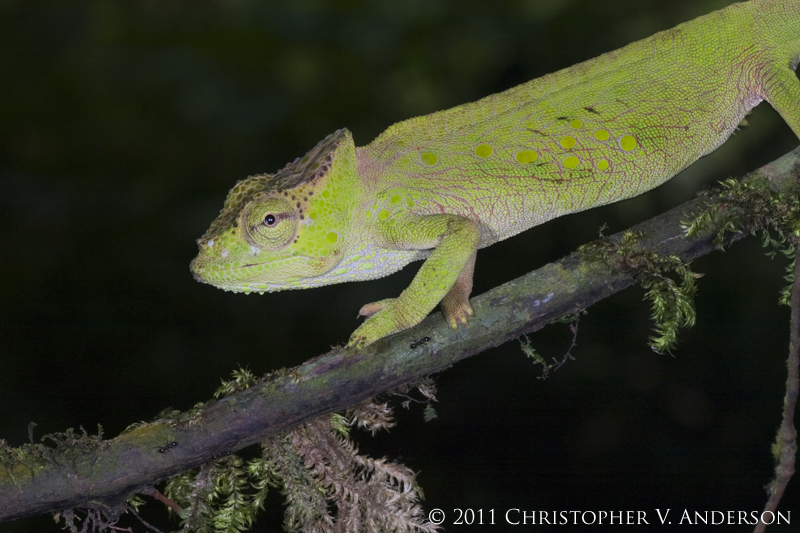
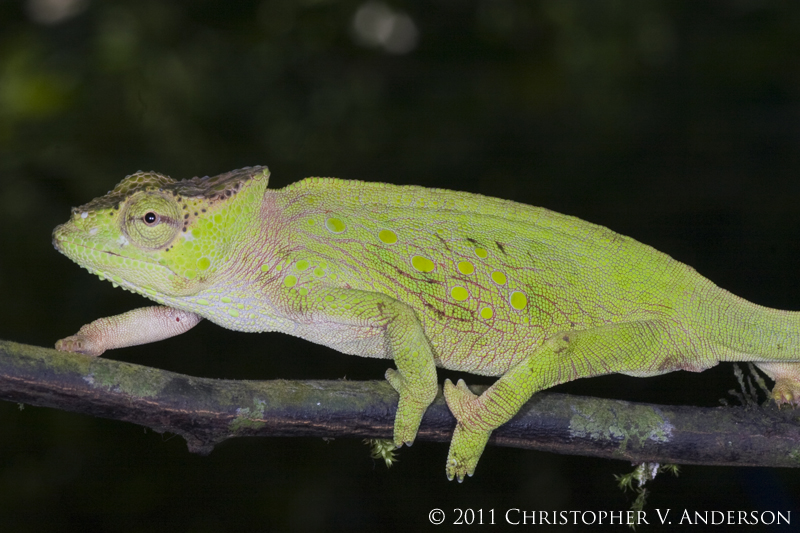
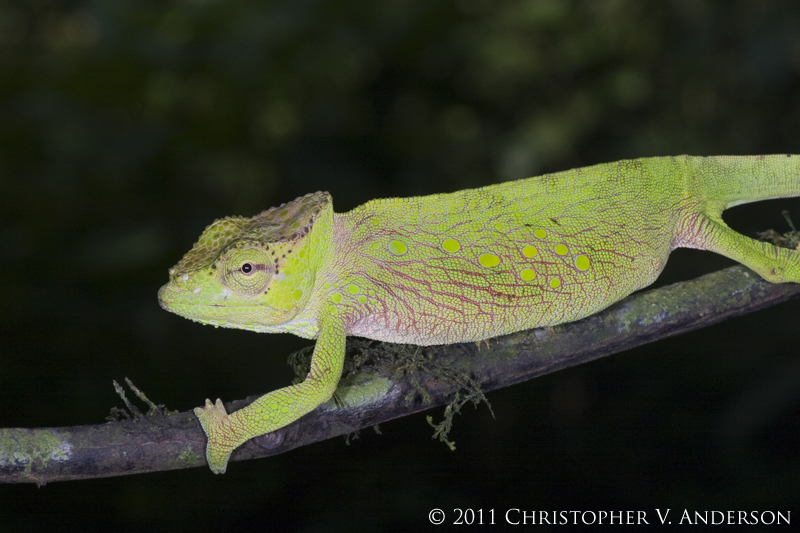
Last edited:




